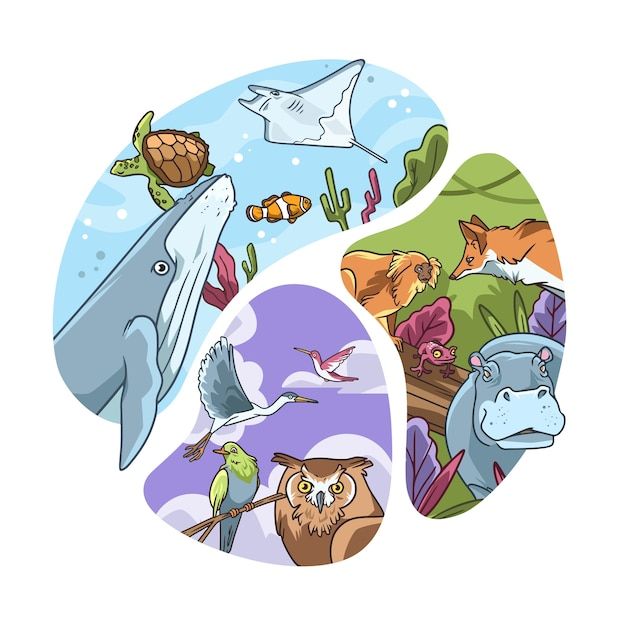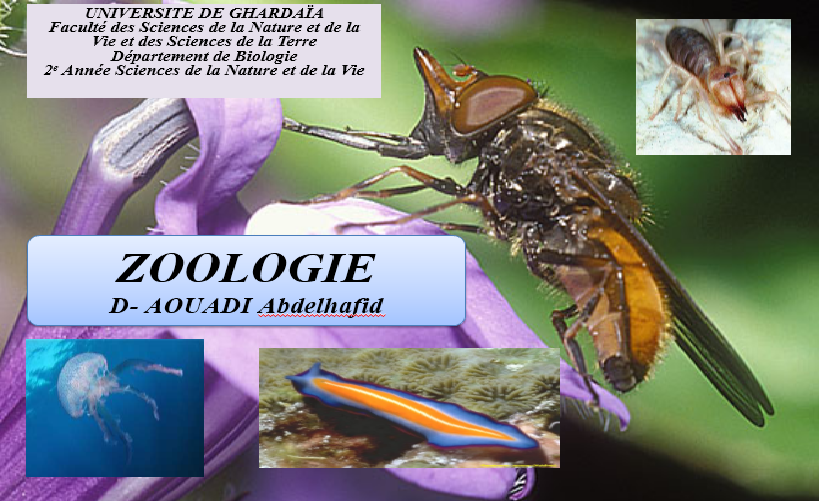
Zoology is the science that studies the kingdom of animals. It is a science that uses the results of several disciplines: general anatomy, comparative anatomy, histology, physiology, embryology, paleontology, ecology and genetics. She is interested in structures through the study of anatomy, cytology and histology. It studies the relationship between living beings and their environment (ecology). She is interested in the distribution of animals in their environment (biogeography). She is interested in determining the functions specific to the various organs (physiology). She is interested in studying the different characters that allow us to differences between species (systematic).
The practical work will allow you to better visualize the organisms described in the course. You will be able to observe them, draw them, manipulate them, dissect them and thus better understand their morphology, their adaptations and their physiology.
- Enseignant: Radhia BIAD

Cet enseignement a pour objectif de sensibiliser les étudiants aux enjeux, contenus et actions du développement durable. Il s’agit de leur faire prendre conscience qu’il est possible d’agir pour la préservation de l’environnement, à travers leur formation, ainsi qu’à leur échelle, sur leur consommation, leurs activités quotidiennes et leur société. Lors de sa formation universitaire, quelle qu’elle soit sa spécialité et son ambition pour ses futures orientations professionnelles, l’étudiant aura l’occasion d’apprendre et d’expérimenter sa connaissance sur le développement durable.
Le Développement durable est actuellement une des réponses qui émerge dans le monde entier, pour faire face à la conjonction actuelle des grands enjeux écologiques, économiques et sociétaux du monde.
- Enseignant: Hadjira Benhedid

- Enseignant: Wafa Bensania

- L’étudiant est censé avoir un savoir sur les différents embranchements du règne animal, notamment les sous règnes des unicellulaires et des pluricellulaires.
- Connaître les principaux groupes du règne animal au plans : Architecture générale, Caractéristiques (Systématique, Morphologie, Anatomie, reproduction, Ecologie), contraintes, adaptations, et évolution.
- Connaître les caractéristiques de classification entre Protostomiens et Deutérostomiens.
- Observer et manipuler des échantillons des différents embranchements.
- Enseignant: Abdelhafid Aouadi

This module allows students to acquire basic notions of biochemistry, and to know the structure and function of macromolecules in living beings, specifically carbohydrates, proteins, lipids and nucleic acids.
- Enseignant: Malika SEDDIKI
- Enseignant: Said BELGHIT

- Communication & Expression Techniques is planned for the second level biology, Ecology & Agronomy branch. It sets out for practice English in their environnement.
- This module is programmed in the first level but in the second level is profound as basic of English.
- Enseignant: Ouarda Belabbassi
- Enseignant: Rekia CHERIF
